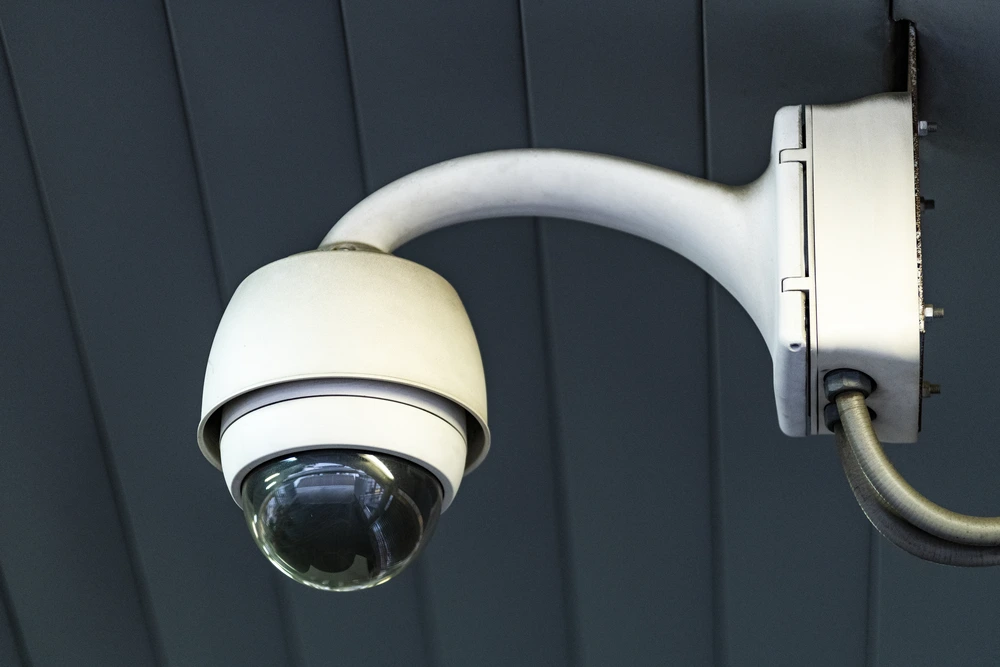Installing security cameras can feel like giving your home or business a set of vigilant eyes. With the rise of smart home technology, many Melbourne property owners are exploring CCTV installation to bolster safety and peace of mind. With technology advancing rapidly, today’s systems offer high-definition clarity, remote access, and smart features that make it easier than ever to keep an eye on what matters most.
In recent years, the demand for reliable surveillance systems has grown significantly across Australia. Property owners now look beyond basic setups, seeking solutions that blend quality equipment with professional installation for long-term reliability. The right system is not just about buying cameras; it’s about designing a tailored security solution that covers vulnerable areas, integrates seamlessly with existing infrastructure, and complies with privacy regulations.
For residents and business owners, understanding the cost and process of CCTV installation in Melbourne is essential to making an informed investment. From small homes in the suburbs to multi-site enterprises in the CBD, Melbourne’s diverse properties require different approaches, making professional advice and a customised plan critical for achieving the best results.
Why Install CCTV in Your Melbourne Property?
Security camera installation has become increasingly popular for both households and businesses. A visible camera is more than just equipment; it’s a deterrent. The Victorian Government notes that CCTV can deter potential offenders and improve people’s perceptions of safety.
Moreover, CCTV systems are not just eyes; they are also records. If an incident does happen, having clear video footage can be invaluable. The Victoria Police advises that CCTV can assist in identifying offenders and provide peace of mind by allowing you to monitor your property remotely.
A security camera mounted high on an exterior wall provides broad coverage of the property and streets. Properly positioned cameras, as advised by Victoria Police, should cover key entry points and be visible.
Understanding CCTV Installation Costs in Melbourne
While it’s tempting to search for a single average price, CCTV installation in Melbourne is a service where the cost is shaped by multiple variables. To make sense of it, it’s helpful to break the costs into two categories: equipment and installation.
Equipment Costs
The cameras themselves are the biggest factor. Melbourne homeowners might opt for 1080p HD cameras for general coverage, while businesses often prefer 4K ultra-HD units with advanced night vision. Other equipment costs include:
- Digital Video Recorders (DVRs) or Network Video Recorders (NVRs): These store and manage footage. NVRs, often paired with IP cameras, tend to be more expensive but offer better scalability and resolution support.
- Cabling and Connectors: High-quality cables reduce interference and improve reliability.
- Power Supply Units: Essential for running cameras without disruptions.
- Mounting Hardware: Brackets, weatherproof housings, and other fixtures.
Installation Costs
This covers the labour and expertise of the CCTV installer. It includes system design, positioning cameras for maximum coverage, running cables discreetly, configuring recording devices, and testing the system. Installations in multi-storey buildings or sites with restricted access typically cost more due to the extra time and equipment needed.
Cost Factors for CCTV Installation
When planning a CCTV system, several important factors will affect how the system performs and thus its cost. Below is a summary of factors that can influence the complexity and cost of a CCTV installation:
| Factor | What to Consider |
| Number of Cameras | More cameras cover more area, but increases equipment and installation time. |
| Camera Quality | Higher resolution, better low-light/IR performance, or advanced features cost more per camera. |
| Installation Type | Wired systems may require running cables behind walls and through ceilings, adding labour. Wireless cuts cabling but depends on Wi-Fi strength and batteries. |
| Placement Complexity | Cameras on tall poles, rooftops, or at odd angles require special mounts or lifts, which increase labour and equipment costs. |
| Additional Components | Recorders (DVR/NVR), hard drives, extra cloud storage, and additional sensors/alarms all add to the overall price of a CCTV project. |
| Professional vs DIY | Hiring a professional ensures correct setup and compliance, but it involves labour costs. DIY can save on labour but requires technical skill and often isn’t covered by warranties. |
Home CCTV vs Commercial CCTV
Whether you’re securing a detached house or a commercial shopfront, the core principles remain the same: cover your assets and entrances, ensure good visibility, and secure your recordings. However, there are some differences between residential and commercial installations in Melbourne:
Scale and Coverage: Residential CCTV usually covers the immediate home area. Commercial systems often span parking lots, warehouses, multiple entrances, and broader perimeters. Naturally, larger areas require more cameras, longer cable runs, and possibly outdoor-rated hardware.
Regulatory Context: Businesses may have extra rules. For instance, if you film customers or staff, privacy regulations may require you to display notices. Some councils in Victoria have guidelines on filming public footpaths or neighbouring properties. It’s wise for businesses to check local council rules about public CCTV, especially for cameras covering the street or parking areas.
System Integration: Commercial systems often integrate with alarms, access control, or professional monitoring. For example, a store might link cameras to an alarm so that if motion is detected after hours, alerts are sent and recording starts. Homes typically rely on simple motion alerts to phones or self-monitor via apps.
Hardware Durability: Businesses might invest in more rugged cameras, vandal-resistant domes, or higher IP ratings, because they face harsher use or target. Homes usually opt for standard weatherproof cameras. Either way, ensure any outdoor camera is built for Victoria’s climate.
Planning Your CCTV Installation
A CCTV project starts with careful planning. Here’s a checklist we often recommend:
- Assess Your Needs: Walk around the property. Think like a camera: what do you want it to see? Identify high-risk zones (doors, windows, garages). Decide if you need indoor cameras.
- Select the System Type: Choose between analogue vs IP. IP (network) cameras offer higher resolution and flexible wiring but require network setup. Analogue (coax) is simpler but of lower quality. Also, pick wired vs wireless based on your building’s layout.
- Plan Camera Positions: Mount cameras high and out of reach, angled to cover entrances or yard perimeters. Place them under eaves or on sturdy brackets. Avoid glare: don’t point a camera directly at the sun during morning/evening. Consider the shape of your property; odd corners or sheds may need custom mounts.
- Consider Lighting: Survey how areas look at night. If a spot is dim, either use IR-equipped cameras or install motion-activated lights. The extra lights will dramatically improve night footage and are a proven deterrent.
- Check Power and Network: Identify where each camera will get power. Wired systems need nearby outlets. If using PoE, ensure your switch or router can supply enough power. For Wi-Fi cameras, make sure your router’s signal reaches every camera location. You may need extenders for large homes.
- Legal/Privacy Steps: If any camera points toward a public area (street, footpath) or a neighbour, consider privacy rules. A good practice is putting up a sign like Private CCTV in Operation. Also, remember: you can voluntarily register your CCTV system with Victoria Police. They maintain a Community CCTV database, so if your cameras cover places like driveways, yards, or streets, police can contact you if an incident is captured on your footage.
- Decide on Storage: Will you record locally or to the cloud? More cameras and higher quality need more storage. A multi-camera system might require several terabytes of disk space.
By ticking off each of these steps, you’ll avoid costly surprises. It also helps when you get quotes: you can ask installers to quote a clearly defined system.
Secure Your Home with Expert CCTV Installation
A CCTV system is more than a set of cameras; it’s a tailored security network that works quietly in the background to protect your property. Throughout this guide, we’ve explored how installation costs in Melbourne are shaped by the type of equipment, the scale of coverage, and the skill of the installer. Understanding these elements helps you budget effectively and avoid paying for features you don’t need.
For homeowners, a few strategically placed cameras can be enough to safeguard family and property. For businesses, the solution often involves wider coverage, higher resolution, and integration with other security measures. The common thread is that every installation should be customised to the unique risks and layout of the site.
When you want a system that’s designed to last and installed with precision, trust the experts. Eleco Electrical & Data provides CCTV installation Melbourne property owners can depend on, combining premium technology with skilled workmanship. Contact our team today to arrange your tailored security solution.
FAQs:
-
Do I need an electrician for CCTV installation in Melbourne?
If your CCTV system requires hardwiring for power or data, Victorian law requires a licensed electrician to carry out the work. This ensures safety, compliance with electrical codes, and maintains your insurance coverage.
-
Is it legal to have CCTV cameras outside my Melbourne property?
Yes, it’s legal to install CCTV cameras outside your property in Victoria, provided they mainly capture your land. Avoid filming neighbours’ private areas and consider signage if cameras face public spaces. Businesses must inform customers and staff about surveillance, often through visible notices.
-
What’s the difference between wired and wireless CCTV systems?
Wired systems transmit footage through physical cables, offering reliable performance and consistent quality. Wireless systems use Wi-Fi for video transmission, making them easier to install but more dependent on network strength.


